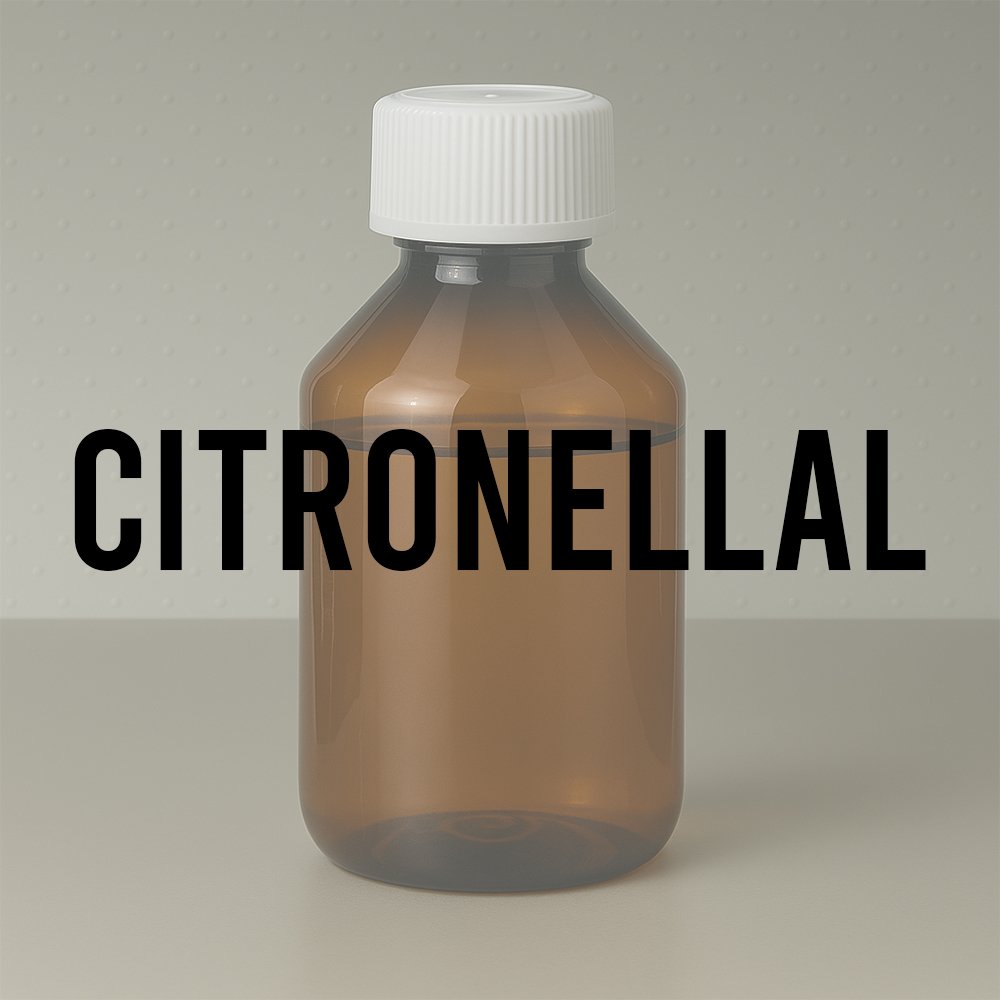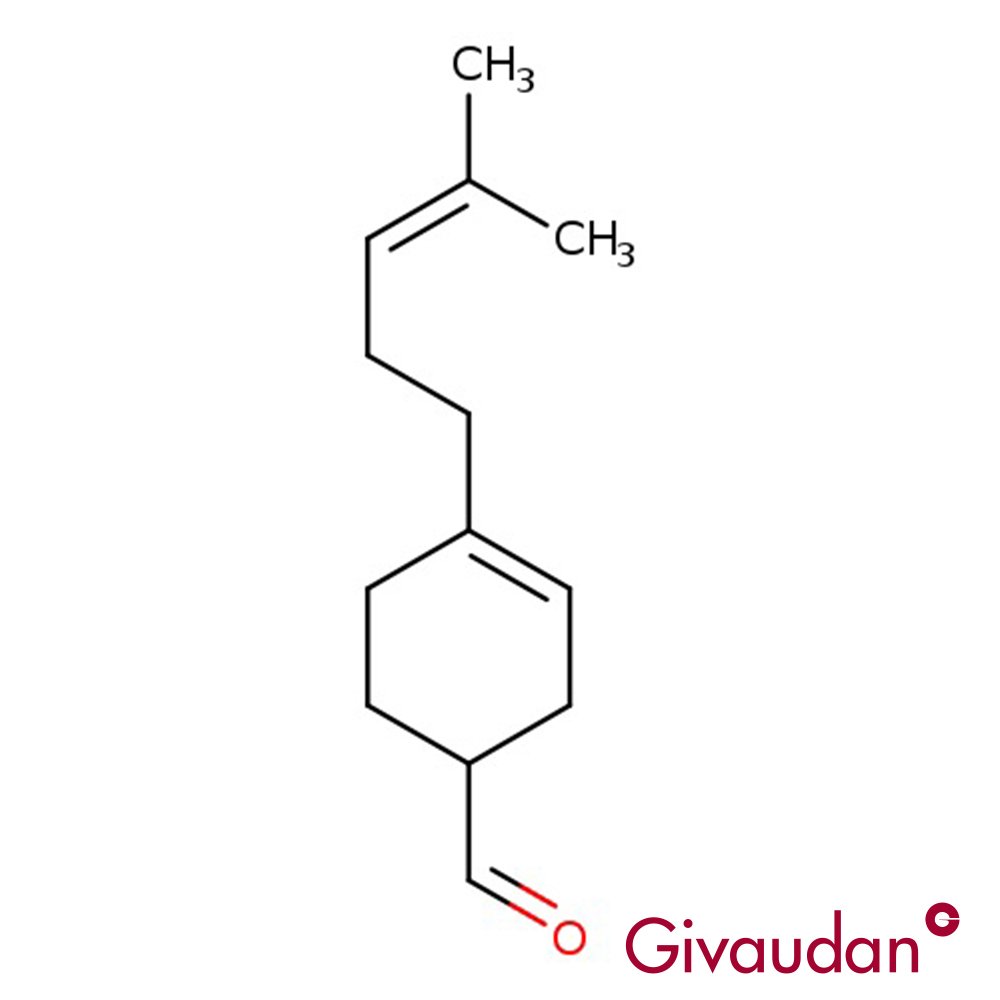Technical Ingredient Overview
🔎 Chemical Name: Dodecanal
🧪 Synonyms: Lauric aldehyde, Aldehyde C-12, Dodecan-1-al
🧬 Chemical Formula: C₁₂H₂₄O
📂 CAS N°: 112-54-9
📘 FEMA: 2402
⚖️ MW: 184.32 g/mol
📝 Odor Type: Fatty aldehyde
📈 Odor Strength: Strong (very diffusive)
👃🏼 Odor Profile: Waxy, citrus-peel-like, aldehydic, fresh, soapy, slightly floral
⚗️ Uses: Fine fragrance, functional perfumery (soaps, detergents), flavorings
🧴 Appearance: Colorless to pale yellow oily liquid
What is Aldehyde C12?
Dodecanal, commonly referred to as Aldehyde C12, is a long-chain aliphatic aldehyde belonging to the class of saturated fatty aldehydes. It possesses a powerful, radiant odor profile that fuses waxy, citrus-peel nuances with creamy floral-lactonic undertones. Despite its relatively high molecular weight, it is surprisingly diffusive and volatile, often used in extremely low concentrations to impart brilliance and abstract freshness to fragrance compositions (Arctander, 1960; Sell, 2019).
This molecule was part of the transformative wave of synthetic ingredients that redefined modern perfumery in the 20th century, providing new tools to manipulate olfactory space and structure in ways that naturals alone could not achieve (Morris, 1984).
Historical Background
The use of aliphatic aldehydes, particularly C10, C11, and C12, rose to prominence with the creation of Chanel No. 5 by Ernest Beaux in 1921—a watershed moment in perfumery that introduced abstract, luminous compositions based on aldehydic top notes (Morris, 1984; Sell, 2019). Although Aldehyde C12 MNA was the principal aldehyde in that formulation, Aldehyde C12 Normal (dodecanal) later gained popularity in the mid-20th century as a fatty-floral modifier known for its creamy, clean, and somewhat lactonic nuances (Wright, 2012).
Compared to its shorter homologues (C8–C11), dodecanal imparts a softer, more luxurious aldehydic effect, often described as “sunlight on fabric” or “soapy floral light” (Arctander, 1960). It became particularly valued in post-war perfumery as the aldehydic aesthetic evolved from boldness toward elegant abstraction.
Discovery and First Synthesis
Dodecanal was first identified in the late 19th century, initially found in trace amounts in natural essential oils such as coriander oil. Its synthetic pathway was established shortly thereafter through the oxidation of lauric alcohol (dodecanol)—a primary fatty alcohol derived from natural fats and oils such as coconut and palm kernel oil (Burdock, 2010).
Industrial-scale synthesis was optimized in the 20th century via oxidative methods employing metal catalysts, including chromium and manganese salts, to selectively produce the aldehyde from saturated alcohols. Modern production focuses on eco-friendlier alternatives with higher selectivity and reduced waste streams (Sell, 2019).
Olfactory Profile and Perfumery Applications
Scent Family: Aldehydic / Fatty / Citrus Floral
Main Descriptors: Waxy, citrusy, creamy, soapy, floral-lactonic
Intensity & Diffusion: High (very diffusive at low doses)
Tenacity: Moderate to strong
Volatility: Medium-high
Applications in Fine Fragrance
Aldehyde C12 Normal serves a crucial function in aldehydic floral, citrus, and chypre compositions. It is commonly dosed below 0.2% to impart:
An airy, clean brilliance in the top notes
Creamy diffusion in white florals such as jasmine, orange blossom, and ylang-ylang
A signature “soapy” effect often used in classic and neo-retro perfumery
It is synergistic when blended with other aldehydes (C10, C11, C12 MNA), ionones, musks, and ambers, offering lift and diffusion without dominating the heart of the fragrance.
Notable pairings:
Violet derivatives (ionone, methyl ionone)
Linalool & linalyl acetate
Jasmine bases (e.g., benzyl acetate, hedione)
Orange blossom and neroli bases
Performance in Formula
Strong diffusion with high volatility relative to its molecular weight
Acts as an olfactory amplifier, elevating surrounding materials
May require stabilization in acidic or oxidative environments
Can discolor in alkaline soap bases unless buffered
Best used in trace to low concentrations (0.01–0.2%) due to high potency
Industrial & Technical Uses
Beyond perfumery, dodecanal is also used in:
Flavor compositions (FEMA 2402) — where it imparts citrus-peel, fatty, and creamy notes to formulations such as orange, butter, or coconut flavor bases
Functional perfumery — especially in detergents and soaps, due to its clean diffusivity
Intermediate for surfactants and lubricants in the chemical industry
Oxidation precursor for lauric acid (dodecanoic acid), a base material for cosmetics and soaps
Regulatory & Safety Overview
IFRA Status: Permitted under IFRA 51; no restrictions beyond general safety limits
FEMA: FEMA No. 2402, approved for flavor use within recommended intake thresholds
EU Cosmetic Regulation: Not listed as a common allergen; authorized for use
GHS Classification: May cause skin or eye irritation in high concentrations
REACH: Registered; not listed as a substance of very high concern (SVHC)
Toxicology: Oral LD50 (rat) ~ 3600 mg/kg; low acute toxicity profile (PubChem, 2024)
References
Arctander, S. (1960). Perfume and Flavor Chemicals (Aroma Chemicals). Montclair, NJ: Author.
Burdock, G. A. (2010). Fenaroli’s Handbook of Flavor Ingredients (6th ed.). Boca Raton, FL: CRC Press.
Morris, A. F. (1984). Aldehydes in perfumery. Perfumer & Flavorist, 9(2), 34–38.
Sell, C. S. (2019). The Chemistry of Fragrances (3rd ed.). Cambridge: Royal Society of Chemistry.
Wright, J. (2012, August 13). The waxy world of long-chain aldehydes. Perfumer & Flavorist. Retrieved from https://www.perfumerflavorist.com
PubChem. (2024). Dodecanal. Retrieved from https://pubchem.ncbi.nlm.nih.gov/compound/8171
IFRA Standards. (2024). IFRA Amendment 51. Retrieved from https://ifrafragrance.org
FEMA. (2024). Flavor and Extract Manufacturers Association GRAS List. Retrieved from https://www.femaflavor.org













